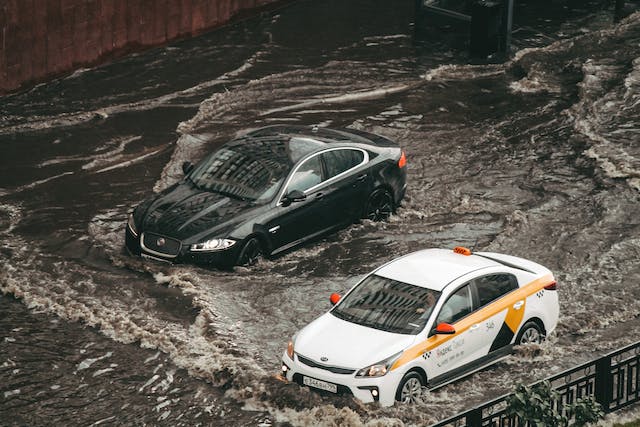
Loading up the four-wheel drive and heading off the beaten track is a great way to spend a weekend. Adventuring with friends, conquering rough terrain and testing the limit of your vehicle is always fun.
But off-road adventures come with a few risks. While you can always call for breakdown towing if you’re really in trouble, it could be a long wait before help arrives. In which case it’s better to know how to get yourself out of trouble.
In this article we’ll discuss everything you need to know about recovering a bogged car from soft surfaces, so you can keep your adventure moving!
Learning to Drive Off-Road
Getting stuck is a problem. And it’s all the more dangerous for inexperienced drivers.
If you’re going off-road then we recommend taking an experienced driver with you. A little bit of advice can greatly speed up the process of learning to control a vehicle in challenging terrain, and you’ll always have help if you need to get a bogged car out of trouble.
It’s also a good idea to bring a friend in a second vehicle. Recovering a 4WD is much easier when you have a second car and a second set of hands. It also ensures you won’t be stuck on your own in a remote location.
We also strongly recommend bringing the recovery tools listed below. You don’t need to buy all the latest and greatest gadgets to go off-roading. But, having a few simple pieces of equipment makes it significantly easier to recover a stuck vehicle, especially if you are by yourself.
Important Recovery Tools
Every off-road driver needs a few tools to keep themselves out of trouble. Recovery gear should be stored in an easily accessible part of the car (such as a box on the roof or in the backseat). Your kit should contain at least a few things:
- Snap straps – these elastic straps act like a spring to store energy that can be used to snatch a car out of trouble. They’re inexpensive and very effective for recovering a vehicle that’s stuck in soft sand or mud.
- Recovery boards – are plastic tracks that can be placed under the wheels that have lost traction. It’s a good idea to carry four traction boards on all trips.
- Tyre inflator – these compact air compressors can be used to increase or decrease tyre pressure as needed. That’s indispensable if you plan to travel on sealed roads in between destinations, or if the surface you’re driving on changes during the trip.
How to Recover a Vehicle That is Bogged
All off-road drivers get bogged at some point. The wheels start losing traction and the instinct is to put your foot down to regain momentum. But that will probably just dig you in deeper, creating an even bigger problem. If you notice that you’ve lost too much traction, bring the vehicle to a stop and try the following:
- Assess the situation and see why you’re stuck. Is the vehicle caught up on something? Have the wheels lost traction? Which wheels are spinning? Answering these questions will help you figure out what to do next.
- Double check your tyre pressure and make sure it’s set correctly for the surface you’re on.
- Try applying weight over the wheels that are spinning. This could give you just enough of a boost to get unstuck.
- Use recovery boards to regain traction and get back on track. If you don’t have recovery boards then you can improvise with things like coarse gravel, large sticks or even a beach towel.
- Dig yourself out of the hole by using a shovel to create additional ground clearance and a smooth ramp for your wheels.
- Ask a buddy to snatch you out of trouble with a snap strap. When using snap straps, be careful not to stand too close to the strap. Don’t use snap straps like towing ropes!
- Winch yourself out of the hole using a nearby tree, a sand anchor or another vehicle. Winches are expensive, but they’re the perfect tool for anyone that off-roads frequently.
Recommended Tyre Pressures for Off-Roading
Tyre pressure is one of the most important factors in getting stuck off road. We’ve provided the table below to help you set your tyre pressures for your journey:
| Surface Type | Recommended Tyre Pressure |
| Sealed roads | 30-35 psi |
| Dirt roads | 30 psi |
| Gravel roads | 25-32 psi |
| Ruts and rough tracks | 15-20 psi |
| Muddy tracks | 20-25 psi |
| Rocky areas | 15-22 psi |
| Beach sand | 15 psi |
| Soft sand and sand dunes | 13-18 psi |
| Sand recovery | 6-10 psi |
These tyre pressures are only a guide. It’s up to you to assess the surface and the condition of your tyres, and inflate or deflate tyres as necessary. Be wary about deflating tyres too much – this can cause the car’s weight to be distributed too widely, which is also problematic when you’re trying to regain traction.
Don’t be afraid to change tyre pressures as you go! For example if you’re going between beach sand and dune sand, you may need to let some pressure out in order to reach your destination.